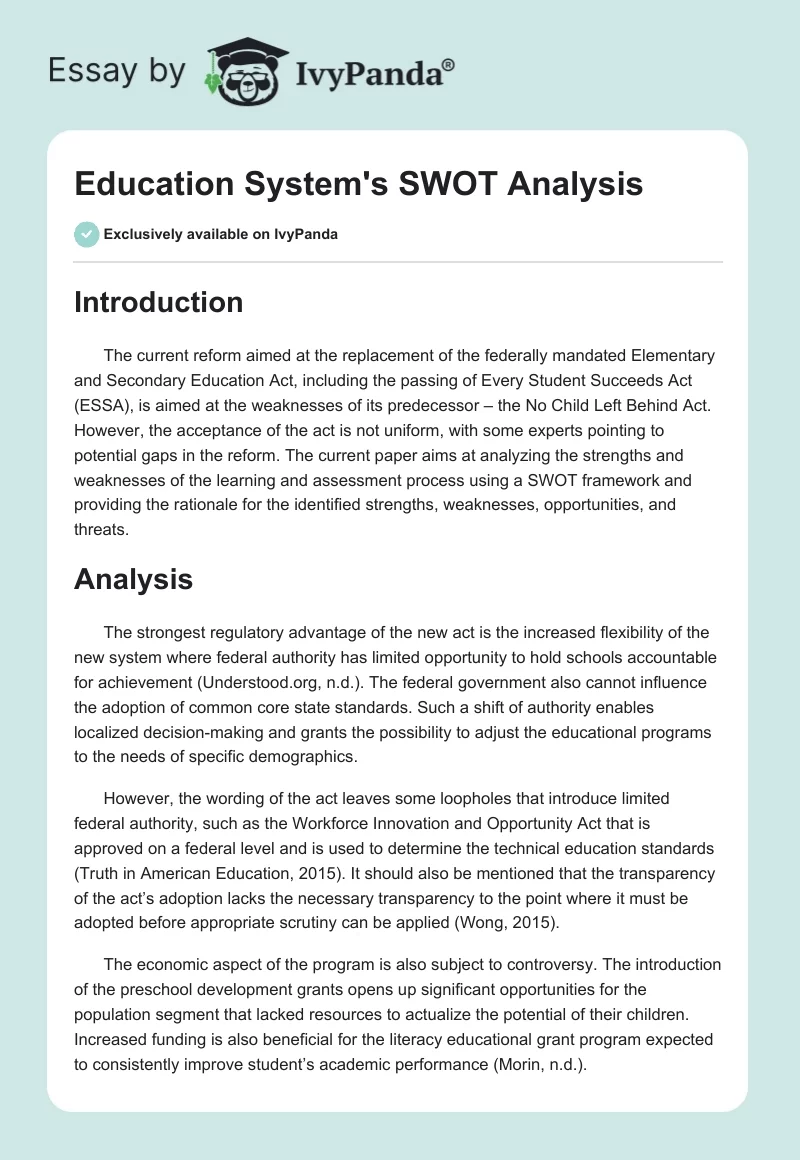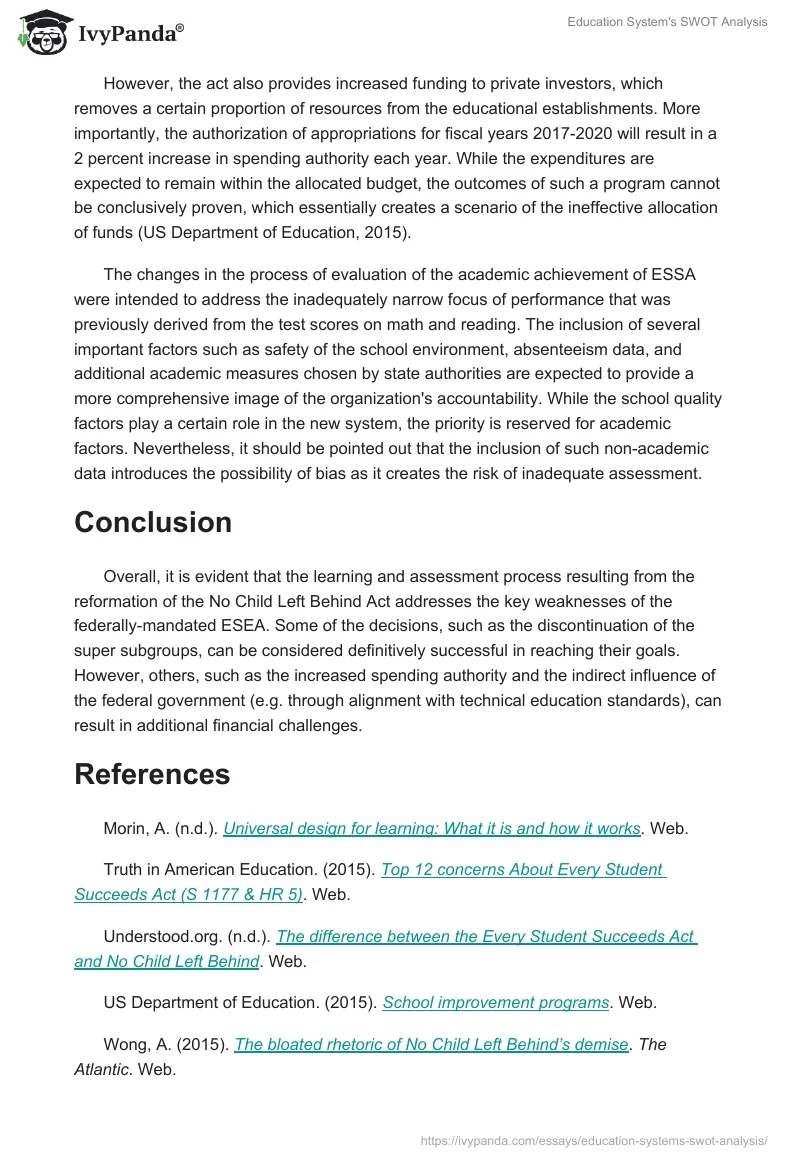Introduction
The current reform aimed at the replacement of the federally mandated Elementary and Secondary Education Act, including the passing of Every Student Succeeds Act (ESSA), is aimed at the weaknesses of its predecessor – the No Child Left Behind Act. However, the acceptance of the act is not uniform, with some experts pointing to potential gaps in the reform. The current paper aims at analyzing the strengths and weaknesses of the learning and assessment process using a SWOT framework and providing the rationale for the identified strengths, weaknesses, opportunities, and threats.
Analysis
The strongest regulatory advantage of the new act is the increased flexibility of the new system where federal authority has limited opportunity to hold schools accountable for achievement (Understood.org, n.d.). The federal government also cannot influence the adoption of common core state standards. Such a shift of authority enables localized decision-making and grants the possibility to adjust the educational programs to the needs of specific demographics.
However, the wording of the act leaves some loopholes that introduce limited federal authority, such as the Workforce Innovation and Opportunity Act that is approved on a federal level and is used to determine the technical education standards (Truth in American Education, 2015). It should also be mentioned that the transparency of the act’s adoption lacks the necessary transparency to the point where it must be adopted before appropriate scrutiny can be applied (Wong, 2015).
The economic aspect of the program is also subject to controversy. The introduction of the preschool development grants opens up significant opportunities for the population segment that lacked resources to actualize the potential of their children. Increased funding is also beneficial for the literacy educational grant program expected to consistently improve student’s academic performance (Morin, n.d.).
However, the act also provides increased funding to private investors, which removes a certain proportion of resources from the educational establishments. More importantly, the authorization of appropriations for fiscal years 2017-2020 will result in a 2 percent increase in spending authority each year. While the expenditures are expected to remain within the allocated budget, the outcomes of such a program cannot be conclusively proven, which essentially creates a scenario of the ineffective allocation of funds (US Department of Education, 2015).
The changes in the process of evaluation of the academic achievement of ESSA were intended to address the inadequately narrow focus of performance that was previously derived from the test scores on math and reading. The inclusion of several important factors such as safety of the school environment, absenteeism data, and additional academic measures chosen by state authorities are expected to provide a more comprehensive image of the organization’s accountability. While the school quality factors play a certain role in the new system, the priority is reserved for academic factors. Nevertheless, it should be pointed out that the inclusion of such non-academic data introduces the possibility of bias as it creates the risk of inadequate assessment.
Conclusion
Overall, it is evident that the learning and assessment process resulting from the reformation of the No Child Left Behind Act addresses the key weaknesses of the federally-mandated ESEA. Some of the decisions, such as the discontinuation of the super subgroups, can be considered definitively successful in reaching their goals. However, others, such as the increased spending authority and the indirect influence of the federal government (e.g. through alignment with technical education standards), can result in additional financial challenges.
References
Morin, A. (n.d.). Universal design for learning: What it is and how it works. Web.
Truth in American Education. (2015). Top 12 concerns About Every Student Succeeds Act (S 1177 & HR 5). Web.
Understood.org. (n.d.). The difference between the Every Student Succeeds Act and No Child Left Behind. Web.
US Department of Education. (2015). School improvement programs. Web.
Wong, A. (2015). The bloated rhetoric of No Child Left Behind’s demise. The Atlantic. Web.

